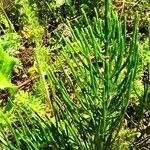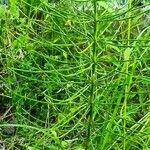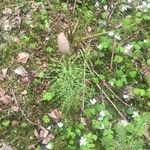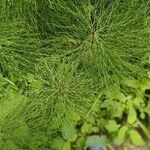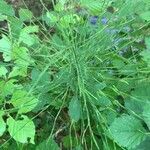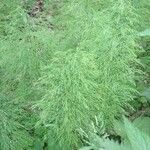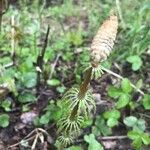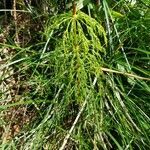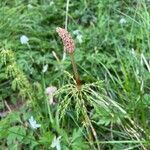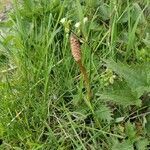Stems annual, dimorphic, the sterile ones 3–7 dm, 1.5–3 mm thick, mostly 10–18-ridged, each ridge with 2 rows of sharp hooked spinules, the stomates in 2 bands in the furrows, the central cavity larger than the vallecular ones and most more than half the diameter of the stem, the sheaths 1–2 cm, basally green, distally brown, with persistent, irregularly connate brown teeth; branches regularly whorled, solid, 4–5-angled, commonly again branched; the first internode commonly longer than the associated sheath of the main stem; fertile stems subprecocious, at first simple and pale, later producing whorls of green, mostly compound branches and often themselves becoming green; cones long-peduncled, 1.5–3 cm, deciduous, not apiculate. Cool moist woods; circumboreal, in Amer. s. to Md., W.Va., Ky., and Io.
Aerial stems dimorphic; vegetative stems brownish to green, branched, 25--70 cm; hollow center 1/6--1/3 stem diam. Sheaths squarish in face view, 3--6 × 2.5--6 mm; teeth reddish, 8--18, papery, 3--10 mm, coherent in 3--4 large groups. Branches in regular whorls, delicate, arching, branched, solid; ridges 3--4; valleys channeled; 1st internode of each branch longer than subtending stem sheath; sheath teeth attenuate. Fertile stems brown, with stomates, initially unbranched, persisting and becoming branched and green after spore discharge. 2 n =216.
A herb. The fertile stems can be 20-30 cm tall.
